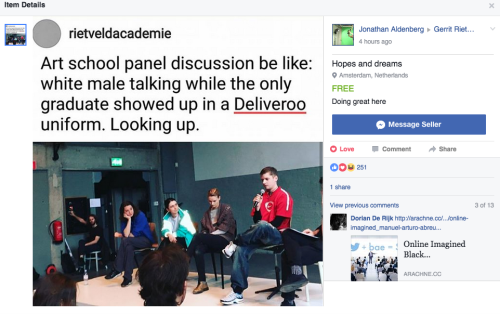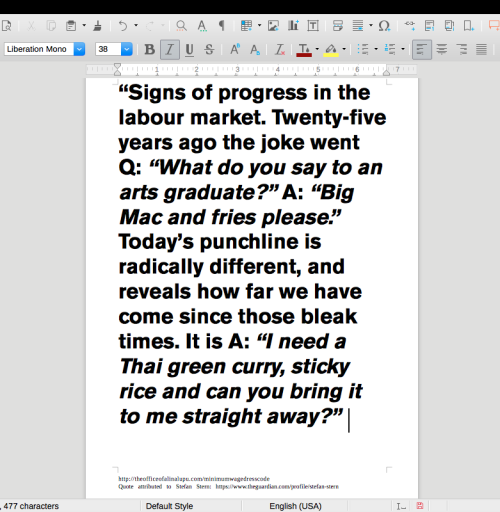
The project gives visibility to specific neoliberal working conditions, new forms of labor as requested by the market, side-jobs in parallel to the creative field as well as the stringent requirement for constant availability and an “always on” mentality that shapes the labor world. It addresses one particular type of new side-job: that of food delivery courier. It takes therefore as its starting point so-called freelance work which is qualified as such only to save employers on the need to pay benefits, vacation days, sick leave. It highlights the independence and self-sufficiency of the worker, quick gain and satisfaction to the detriment of long-term planning and basic human care.
Stemming from the working status that I’ve taken on myself I’ve devised a series of site-specific interventions which are gathered under the above-mentioned title of "Minimum Wage Dress Code". Through them I’ve taken on the role of working as a food delivery courier, as well as given it temporarily to others in conditions similar to mine (either recent art graduates or still students within artistic education) and I’ve worked on turning the tables on the expectations of how such a work is to be performed. During my performances, a courier is stripped of original branding and ends up reflecting on his/her working entanglements, as well as ends up eating the food that is to be delivered.

Performance ingredients:
- unbranded food delivery bags;
- 4 performers rooted in the Dutch education system;
- 4 orders going out in realtime to local food delivery services;
- minimum wage offered to performers.
Recorded sightings:
- Launch of Simulacrum “Het success”, 25 years, Cinetol, Tolstraat 182, Amsterdam, with the presence of: Frederiek Simons, Laurent Atlan, Ida Brottmann Hansen, Dee Hehewerth.
- Kunstvlaai’s PLAYTIME: SSBA Salon, Leidseplein 26 Amsterdam, with the wonderful: Wei Ling Hung, Hanna Manola, Monica Mays and Stijn Pommée. Photo credits: Andreea Peterfi.
- Stedelijk: The Living Museum, Museumplein 10, Amsterdam
- Gerrit Rietveld Academie, Fred. Roeskestraat 96. February 7th, 2017.
- Looiersgracht 60. September 23rd, 2016
The following is a brief intro into the work made by Silvio Larusso in an article published on Institute of Network Cultures's section Entreprecariat and entitled "Notes on Mugtivism and Precarious Merchandising".
"Alina Lupu is a Romanian artist exploring the precarious conditions of life in the arts. In her recent performances, the multiple identities of the young graduate (like that of the emerging artist and the intermittent worker) become intertwined; roles that are generally -and somehow deliberately- understood as distinct come together and clash. While François offers an update to the narrative of the call center agent, which was the stereotypical icon of the precarious worker in the mid-2000s, Alina couples the fragile aspirations and self-attributed labels of creative workers with the mundane activity carried out within the expanding gig economy. Conceptual artist VS side jobber, money VS prestige, autonomy VS subjugation, material VS immaterial labor are only some of the dichotomies that she addresses.
Alina, who works for (or should we say ‘with’?) Deliveroo, has appropriated the bike delivery aesthetics (phone, jacket, cubic backpack) to place the banality of the ‘side job’ at the center of the museum, the gallery, and the conference panel, each of them being an environment that at various levels relies upon this eclipsed type of work. In The Living Museum, she walks through the Stedelijk wearing delivery equipment deprived of any recognizable brand. The white cubic bag resonates with the space where she roams; another white cube, just bigger. Some people notice her, some other don’t. What is she delivering? Does it actually matter? For the courier, it surely doesn’t. Her phone is guiding her. Is she lost? Maybe she’s looking for the museum itself, which indirectly feeds on Alina’s labor. Delivery delivers people. (click here and read on)"